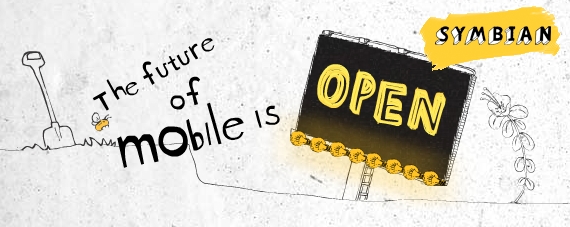
Open source anything is worthy of celebration, but we’re not sure whether the newly opened Symbian mobile operating system is in need of a party or some further investigating. There are a lot of things good and bad that will come with a new transition like this. We give some reasons for why an open source code could be good, or bad, for Symbian and the mobile market.
Good
Effortless Reinvention. Even though Symbian is the leading smartphone operating system in the world, it is kind of old news and Nokia knew that—hence moving it to open source. Now that it is open source the waning platform will be maintained and further developed without any effort or investment from Nokia.
Options. After Google demonstrated how effective an open source mobile operating system can be—thanks Android—more people will be willing to dive into Symbian. This will provide more options for users, developers and smartphone vendors who will customize and format new branches of this mobile OS.
Bigger is Better. The sheer number of Symbian users is what will attract top notch developers and really get things rolling with this whole open source thing. This will definitely help forge relationships with better developers, perhaps even ones who have tried to hook up with Apple and Google.
No Slippery Slope. People love to pull slippery slope arguments out for situations just like this one, claiming that now that Symbian is going open source everyone will. Wrong. That is highly unlikely. You think closed off companies like Apple or Research in Motion are going let just anyone manage their mobile operating systems? We don’t think so—those guys are excelling in the mobile market all on their own.
Not So Good
Still Old OS. So there may be some reinventing going on, but when it really comes down to it, Symbian is still on its death bed. Nokia just recharged its heart with some open source defibrillaters, but unfortunately that could not be enough to get it to beat the way it used to.
Forkage. There could be too many creative lines crossing and confusion may ensue if too many devs get their hands on the Symbian OS. Different developers may take the code in different directions, making it difficult to know which Symbian will work with which Symbian smartphones.
Where Nokia Stands. The aging operating system has been widely associated with Nokia, and that fact itself may deter other smartphone vendors from pouncing on this open source opportunity. Essentially Nokia would be handing out Symbian to its competitors. Will smartphone vendors view Symbian as being a product of Nokia or just a neighboring system?
Editors' Recommendations
- Best OnePlus Open deals: Save $200+ on the foldable phone
- I tried the iPhone’s new Journal app. Here’s what’s good (and bad)
- OnePlus Open vs. Samsung Galaxy Z Fold 5: a really close call
- OpenAI’s new ChatGPT app is free for iPhone and iPad
- Mavenir OpenBeam helps drive growth of private 5G networks

